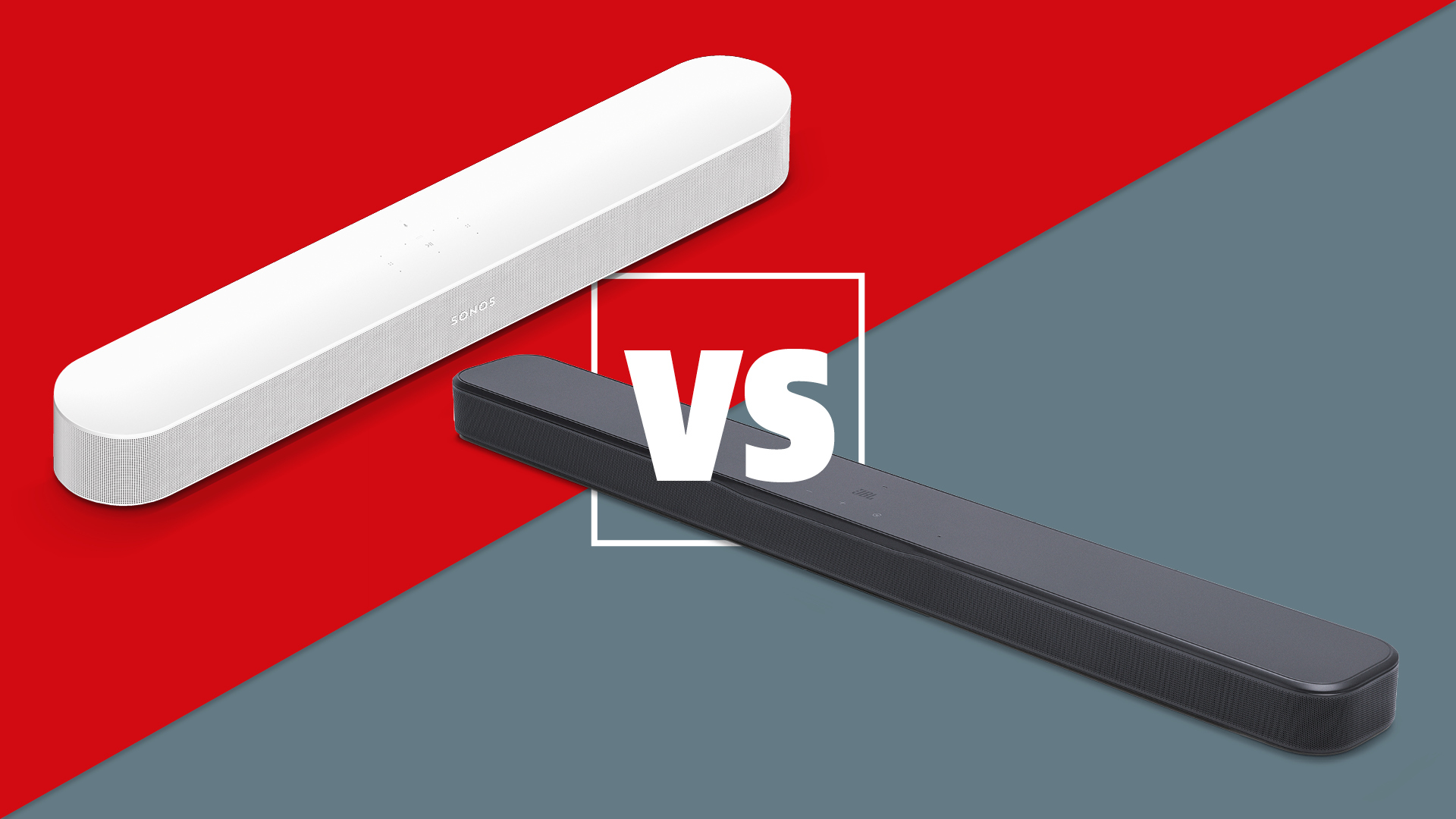
Car audio is big business. When I visited the Dynaudio factory back in 2015, I was amazed to find out that in-car audio accounted for around half of the company's speaker production. And Dynaudio was ahead of the pack.
Hi-fi companies are now firmly ensconced in the automotive world. Brands that we know and love deliver premium sound for high-end cars, as well as more affordable packages for vehicles that even us mere mortals can afford.
The partnerships clearly make a lot of sense financially but there are also sound sonic reasons why we can aspire to hi-fi sound while you're behind the wheel, while the rise of spatial audio has only added to the potential of music on the motorway.
I spent a few days with the Mercedes EQS (a car I definitely can't afford), which is the first car to incorporate Apple spatial audio and comes full-to-bursting with Burmester speakers. It reminded me quite how good an in-car sound system can be. Allow me to explain just what makes a car so fit for the task – and also point out a few reasons why there's no need to abandon your hi-fi system quite yet.
1. A controlled environment
As we like to remind anyone who will listen, your room is arguably the most important component of your music system. And it's easy to get 'wrong'.
Even the best products can struggle if they're in a room that's too big or too small, has an awkward shape, lots of glass, rattling windows... The list of potential problems in the average home is almost endless.
There's little to worry about in this regard when inside a car. It goes with the territory that you will get a uniform space that's solidly built, and where sound waves bounce off surfaces in a predictable manner.
The latest hi-fi, home cinema and tech news, reviews, buying advice and deals, direct to your inbox.
The speakers are designed with all this in mind and for the vehicle in question, with endless listening sessions to ensure they're a good sonic fit for your space. If only we could all enjoy such a bespoke experience at home (it can be done, but you'll have to pay for it).
2. Seating position and speaker placement
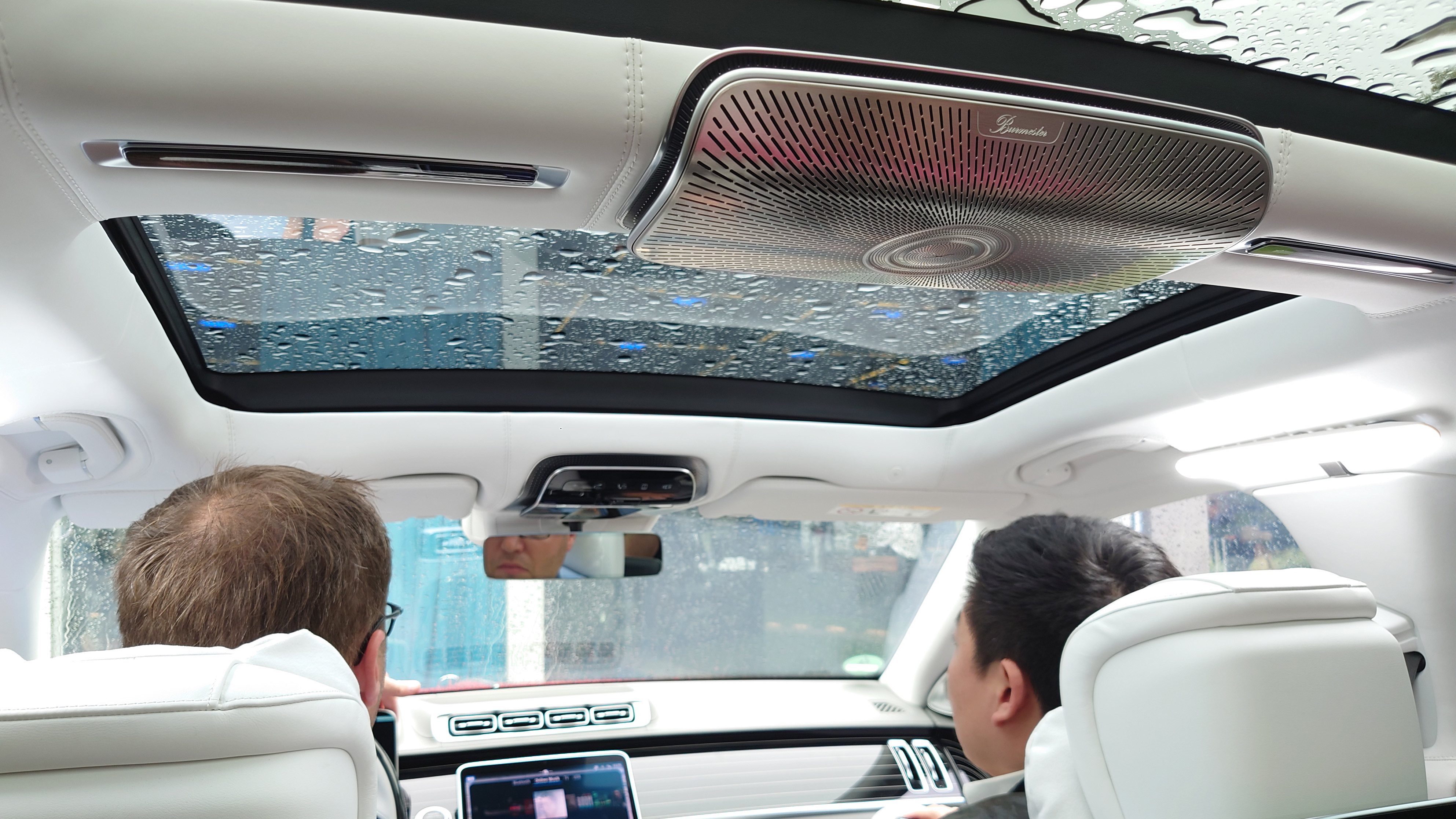
Even in a good room, you have to correctly position your speakers and set up your amplifier, connect your cables, and perhaps also build a turntable – there's a lot to get right and a lot that can go wrong. (And of course, for a lot of us, that's part of the fun.)
Not so – or not so much, at least – inside a car. You can't mess up the location of the speakers or your seating position, and there's certainly minimal set-up required.
When it comes to stereo imaging – being able to perceive the sounds in a three-dimensional space – positioning can be crucial, so to have this taken care of by the experts is certainly a bonus. Yes, the driver's position is off-centre but all that has been allowed for at the point of tuning. And how many of us have the luxury of being able to sit in the perfect sweet-spot at home in front of our hi-fi?
3. Built for spatial audio
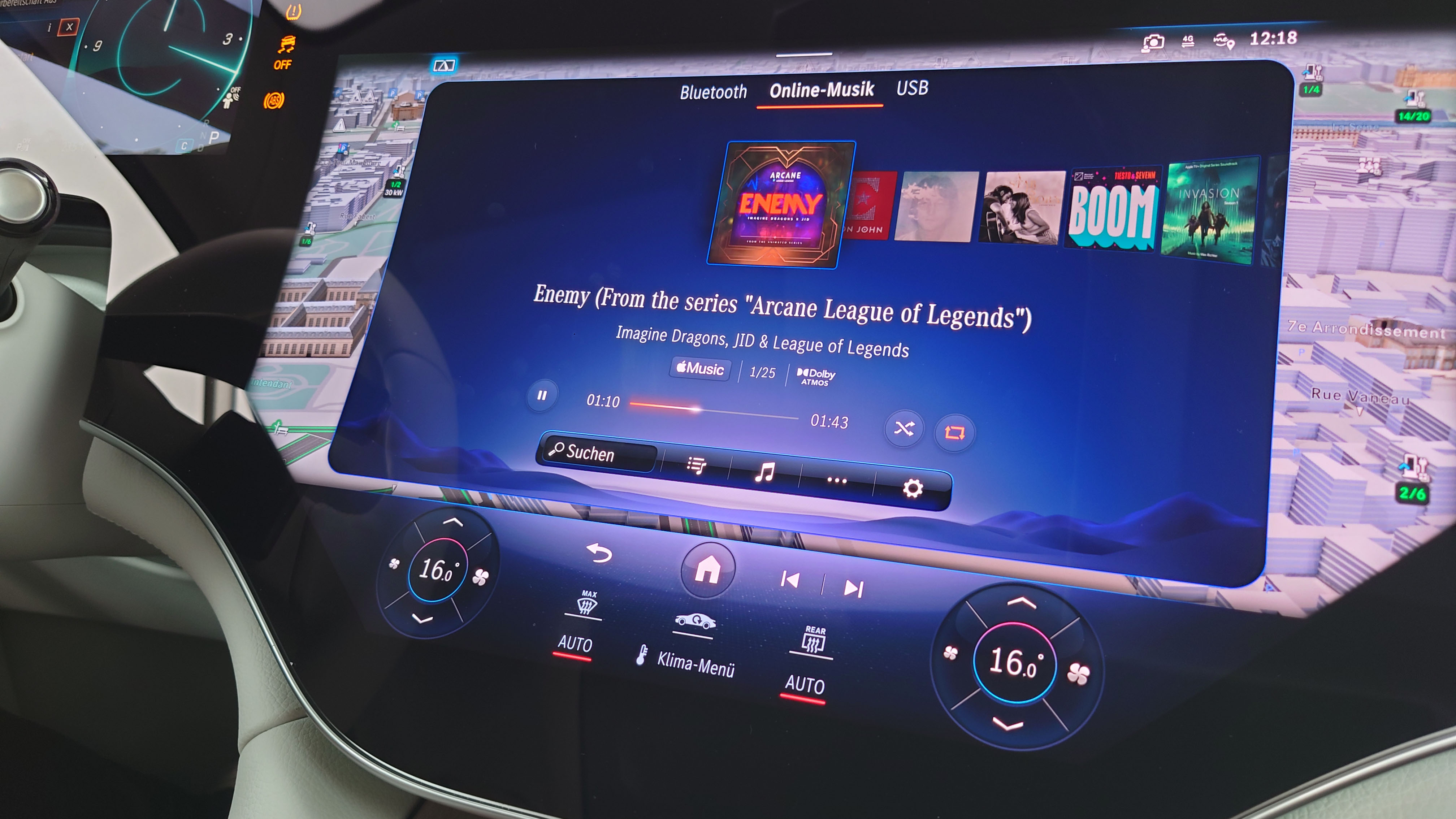
Many people understandably baulk at the idea of putting speakers in the ceiling or even around the room, making true spatial audio somewhat tricky. No such issues inside a car.
In-car audio systems have been filling our cars with speakers tucked into corners and crevices before it was cool, or even really necessary. Now that spatial audio is landing on streaming services, and Dolby Atmos Music is a thing whether you like it or just find it a bit inconsistent, car systems have come into their own. Speakers can be placed perfectly for both spatial audio and your seating position.
I could also see Apple's unique head-tracking enhancement become part of the in-car spatial audio experience. It's a real game-changer when using AirPods Max and an iPad, and I'd love to hear what it can do in this environment.
Sure, I still think a big room with big speakers that are set up perfectly for spatial audio will blow you away more readily than being sat in your car. But it's probably more likely that more people will sooner be able to listen to spatial audio from speakers that surround them in their car than in their front room.
4. Acoustic isolation
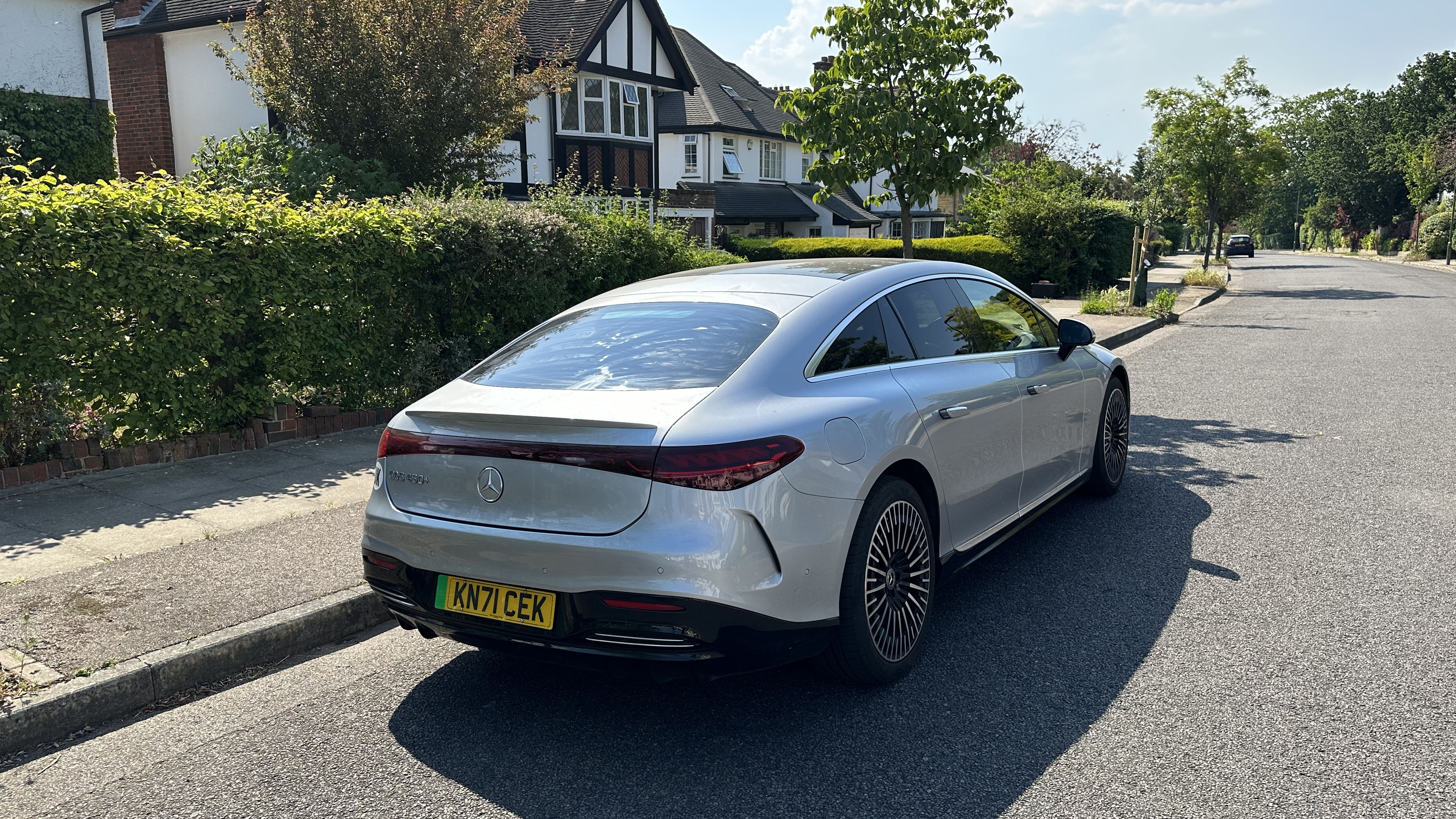
The ideal hi-fi system room requires excellent acoustic isolation (so often, sadly, the pitfall of the hi-fi trade show). You want to minimise external noise and disturbances, and give your system a solid base from which to work and simply focus on delivering great sound. This is why we continue to highlight the importance of hi-fi racks and speaker stands.
When we're at home we're left to our devices to do this, which can mean some questionable choices are made – or enforced. Sub-standard stands, old racks that are no longer fit for purpose, speakers at different heights; we've all been there.
When it comes to car audio, the car manufacturer has taken care of all of this for you. Car manufacturers employ specialised sound-deadening materials and insulation techniques to reduce noise and vibrations for the travellers, which has the added bonus of being ideal for the sound system.
The Mercedes EQS also has the advantage of being all-electric, which means there's no pesky engine noise – ideal for those of us eager to enjoy the sonic experience coming through the speakers rather than from under the bonnet.
5. Clever and customisable
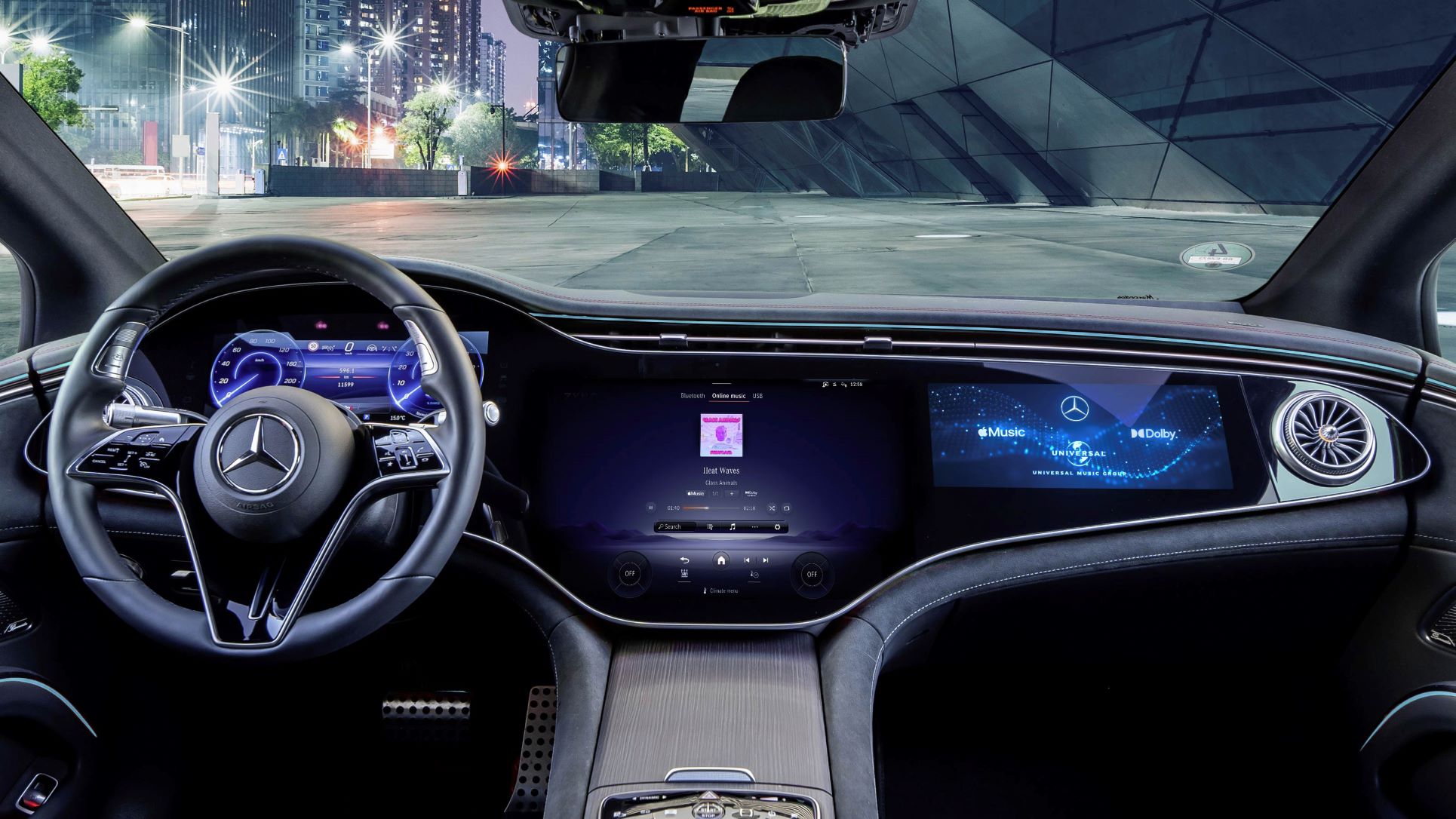
At the heart of the Mercedes EQS home entertainment system is the MBUX Hyperscreen; a huge swathe of screen that gives the driver and the front passenger access to a labyrinthine list of menus and applications.
Not only can your passenger be wiling away the journey watching Netflix, you also have access to audio apps, such as Apple Music. The EQ range was the first to support Dolby Atmos from Apple Spatial Audio. In fact, you currently need to use the on-board system to access spatial audio tracks. Thanks to the car's integrated network data connection, you don't need to use your phone for streaming data, access to apps or for video control.
As well as the latest apps and performance updates, the on-board computer also allows you to tweak the sound. Sure, we tend to say it's best not to mess with simple treble and bass controls – the mastering engineer was probably better qualified – but adapting the sound to the seating position and who is in the car at the time makes a lot more sense. And with spatial audio and up to 31 speakers at your disposal, a bit of tweaking seems fair enough.
A match made in hi-fi heaven?
From Naim and Bentley to Sonos and Audi, Meridian and Jaguar to B&W and BMW, it's clear if you're in the market for a new car – and it doesn't have to be an expensive one – there will likely be an upsell option in terms of the sound system. And if you care about sound quality, and have a passing interest in spatial audio, there's every chance it could turn out to be the best system you own.
But new cars certainly aren't cheap, so perhaps it should come as no surprise that this gets you a tasty sound system. The industry has spied a fresh avenue to explore when it comes to differentiating its offering and hi-fi companies are only too happy to snap up the extra speaker orders.
Of course there remain plenty of reasons why your home hi-fi system could still trump anything a car can offer. Yes, cars are quieter than ever and built to be as smooth and solid as possible but you'll still get plenty of noise when travelling at speed or just in a busy town centre. And if you do have space at home to dedicate to a stereo and/or surround sound system, a relatively small car cabin will be unlikely to match the scale and imaging.
Ultimately, the point of my eye-catching headline was to make it clear that car audio is in a great place for those of us who care about getting high-quality sound. For years standard car audio systems have been – in the words of our resident car audio expert – "pony". I think it's fair to say things are now going in the right direction.
MORE:
Sonos Premium Sound System (Audi Q4 e-tron) review
Bowers & Wilkins Diamond Surround Sound System (BMW iX) review
Everything you need to know about Apple CarPlay

Joe is the Content Director for What Hi-Fi? and Future’s Product Testing, having previously been the Global Editor-in-Chief of What Hi-Fi?. He has worked on What Hi-Fi? across the print magazine and website for almost 20 years, writing news, reviews and features on everything from turntables to TVs, headphones to hi-fi separates. He has covered product launch events across the world, from Apple to Technics, Sony and Samsung; reported from CES, the Bristol Show, and Munich High End for many years; and written for sites such as the BBC, Stuff and The Guardian. In his spare time, he enjoys expanding his vinyl collection and cycling (not at the same time).
